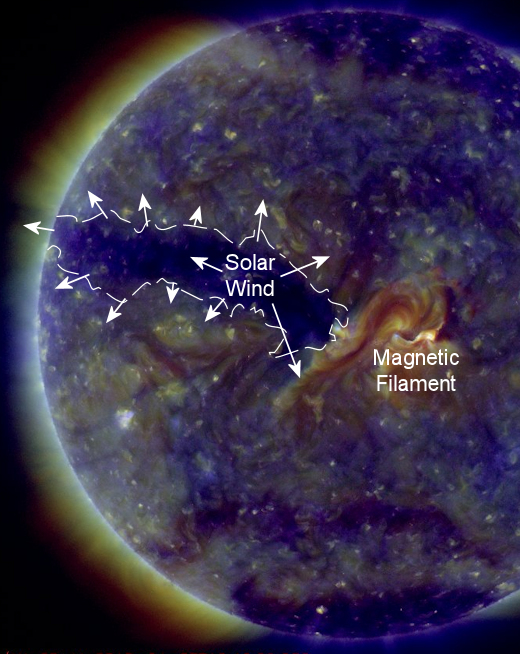The SWLing Post Blog has recently featured a few posts on “Space Weather” & Geomagnetic Storms. As an amateur astronomer, I receive many daily space-related emails in my INBOX right along with the SWLing Post Daily Digest. I thought this might be of interest:
From Spaceweather.com
An unusually wide hole in the sun’s atmosphere is facing Earth and spewing a stream of solar wind toward our planet. Estimated time of arrival: April 9th. Polar geomagnetic unrest and minor G1-class storms are possible when the gaseous material reaches Earth. Visit Spaceweather.com for more information and updates.
Image credit: NASA’s Solar Dynamics Observatory.
The hole bisects half the solar disk, stretching more than 700,000 km from end to end. This means Earth will be under the influence of the emerging solar wind stream for more than 4 days after it arrives.
A G1-class storm is “Minor”, so I doubt there will be very much “radio” impact – but you gotta admit, a hole that large is interesting nonetheless!
Posted by SWLing Post Contributor Troy Riedel


Excellent info DanH. Hopefully you can report back if you observe the same with this one.
I’ll give a try. That opening on 31m was quite spectacular and unusual for propagation conditions during the last several months. I heard it beginning at 0700 UTC here on the US West Coast and it was still strong when I hit the rack at 1000 UTC. It was gone the next day.
There may be some beneficial propagation effects for shortwave from the approaching coronal hole. Last month one of these holes (it may have been the same one) had little effect on solar flux but during the first day that solar wind effects were hitting Earth there was an improvement in shortwave propagation on some bands (31m for me). I understand that this was caused by temporary changes in the Earth’s magnetic field. At any rate this effect lasted only for the first day while the SFI number remained at the same 68 or 69 that was stable during all of the previous week.